Incidental teaching involves manipulating a student’s environment to promote the natural use of educational objectives. While it can be used for a variety of language goals, incidental teaching is particularly effective in promoting initiation. Incidental teaching can be looked at as having four main features:
- The environment is arranged to set occasion for student response
- Teacher waits
- If necessary, student is prompted
- Student response
The reinforcer is whatever the child needs or wants, such as crayons, juice, or a toy. Incidental teaching contrasts with discrete trial teaching, in that while the one encourages responses, the other expects it. Each has its place, and each is better at teaching different skills.
Planning, prompting, and waiting are three critical aspects of incidental teaching. Planning may start with an observation of a child’s current initiation level, as well as determining child’s unique interests. Ways that low functioning children initiate include looking at desired objects, moving toward them, pointing, grabbing, or taking care-giver’s hand. When prompting, the child should be encouraged to produce a slightly more complex language skill than the current ability, using a developmental hierarchy. When waiting, 3-5 seconds between the event and response is often the most effective interval between prompts.
Incidental teaching is often thought of as “sabotaging the environment.” Some specific examples of how to do this include…
- controlling access to materials
- using items of special interest
- setting up repetitive routines
- starting a favorite activity, and then stopping
- looking at materials, then student, then pausing
Much of my information comes from a seminar presented at the American Speech-Language-Hearing Association 2008 convention by the New England Center for Children. Their website is here. Additional information can be found at the Interactive Collaborative Autism Network.
 surprised. It seems like it should be common sense that variety and the unexpected should naturally engage the human mind, much more so than the expected and routine. It’s interesting to see evidence of how this is ingrained in our brains. Unfortunately, the rigid structure of the contemporary bureaucratic educational system, and the necessity of routine imposed by large classroom sizes naturally stifles the creativity necessary to take advantage of this study’s conclusion. In our current system it is far too easy to impose learning rather than to entice learning.
surprised. It seems like it should be common sense that variety and the unexpected should naturally engage the human mind, much more so than the expected and routine. It’s interesting to see evidence of how this is ingrained in our brains. Unfortunately, the rigid structure of the contemporary bureaucratic educational system, and the necessity of routine imposed by large classroom sizes naturally stifles the creativity necessary to take advantage of this study’s conclusion. In our current system it is far too easy to impose learning rather than to entice learning.  Researchers at the Max Planck Institute for Psycholinguistics have used studies of brain waves to show how the brain makes efficient use of tiny cues and context to rapidly anticipate and process language. The studies have shown that different areas of the brain appear responsible for different aspects of comprehension. As one example, a specific brain wave pattern called N400, located in the back of the head, has implicated that area in analyzing the meaning of sentences. The N400 is a spike that occurs when a word is heard that is unexpected or out of context. The remarkable aspect is the speed with which this spike occurs after the word – literally fractions of a second. This, and other similar studies, have shown the amazing efficiency possessed by the human brain in using expectation and anticipation to assist in using language. The study, published in the journal, Current Directions in Psychological Science, was led by Jos Van Berkum at the Max Planck Institute of Psycholinguistics in the Netherlands.
Researchers at the Max Planck Institute for Psycholinguistics have used studies of brain waves to show how the brain makes efficient use of tiny cues and context to rapidly anticipate and process language. The studies have shown that different areas of the brain appear responsible for different aspects of comprehension. As one example, a specific brain wave pattern called N400, located in the back of the head, has implicated that area in analyzing the meaning of sentences. The N400 is a spike that occurs when a word is heard that is unexpected or out of context. The remarkable aspect is the speed with which this spike occurs after the word – literally fractions of a second. This, and other similar studies, have shown the amazing efficiency possessed by the human brain in using expectation and anticipation to assist in using language. The study, published in the journal, Current Directions in Psychological Science, was led by Jos Van Berkum at the Max Planck Institute of Psycholinguistics in the Netherlands.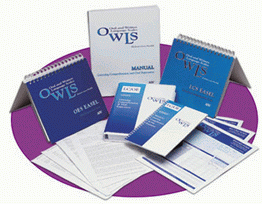
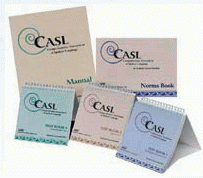 Two versions: Ages 3-6 and 7-21. There are 15 different subtests of the CASL; five tests in each area of semantics and syntax, four tests of supralinguistic skill measurement, and one test of pragmatic language. Three, four, or five tests make up a global, or core composite, score, which varies for each age group. The CASL can measure very specific things, and it’s not necessary to give each subtest required for a composite score. If it’s necessary to get a composite, it can be very time consuming. Research on these things has shown that the CASL is not the most specific test; in other words, the scores don’t always accurately identify the presence of a language disorder. The CASL is best used to obtain additional information in specific areas. The most useful subtests in this regard are the syntax construction, nonliteral language, and pragmatic judgment subtests. More information is
Two versions: Ages 3-6 and 7-21. There are 15 different subtests of the CASL; five tests in each area of semantics and syntax, four tests of supralinguistic skill measurement, and one test of pragmatic language. Three, four, or five tests make up a global, or core composite, score, which varies for each age group. The CASL can measure very specific things, and it’s not necessary to give each subtest required for a composite score. If it’s necessary to get a composite, it can be very time consuming. Research on these things has shown that the CASL is not the most specific test; in other words, the scores don’t always accurately identify the presence of a language disorder. The CASL is best used to obtain additional information in specific areas. The most useful subtests in this regard are the syntax construction, nonliteral language, and pragmatic judgment subtests. More information is  subtests with 4 subtests required to obtain a core language standard score. Subtests include: concepts/following directions, word structure, recalling sentences, formulated sentences, word classes, word definitions, and understanding spoken paragraphs, among others. The CELF-4 is said to have good validity compared to other language tests. It can take awhile to administer, however, and because skills are combined, it can be difficult to identify specific deficits. Find more
subtests with 4 subtests required to obtain a core language standard score. Subtests include: concepts/following directions, word structure, recalling sentences, formulated sentences, word classes, word definitions, and understanding spoken paragraphs, among others. The CELF-4 is said to have good validity compared to other language tests. It can take awhile to administer, however, and because skills are combined, it can be difficult to identify specific deficits. Find more 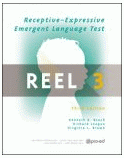
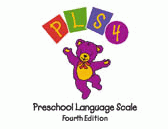 Ages birth to 6. Uses pictures and objects to assess auditory comprehension and expressive communication across domains of syntax, morphology, semantics, and pragmatics. This is a thorough, comprehensive test with good validity. For a child over 6 with a very specific deficit in syntax, morphology or semantics, the
Ages birth to 6. Uses pictures and objects to assess auditory comprehension and expressive communication across domains of syntax, morphology, semantics, and pragmatics. This is a thorough, comprehensive test with good validity. For a child over 6 with a very specific deficit in syntax, morphology or semantics, the 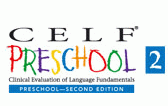 Ages 3-6. Uses well drawn, color pictures. Good test for specific areas, and as second test for five and six year olds. The CELF tests seem to have the best validity and specificity – it accurately identifies language disorders. Core tests: Sentence Structure (Receptive); Word Structure (Expressive); Expressive Vocabulary. Additional subtests: Concepts and Following Directions (Receptive); Recalling Sentences (Expressive); Basic Concepts (Receptive); Word Classes (Receptive and Expressive). Again, the publisher is Pearson –
Ages 3-6. Uses well drawn, color pictures. Good test for specific areas, and as second test for five and six year olds. The CELF tests seem to have the best validity and specificity – it accurately identifies language disorders. Core tests: Sentence Structure (Receptive); Word Structure (Expressive); Expressive Vocabulary. Additional subtests: Concepts and Following Directions (Receptive); Recalling Sentences (Expressive); Basic Concepts (Receptive); Word Classes (Receptive and Expressive). Again, the publisher is Pearson – 
The Language Fingerprint
Earlier I composed a short commentary on what I called the “Language Fingerprint” – each person’s unique language profile. It went like this: Each child demonstrates a unique “fingerprint” when it comes to the units in their language repertoire. Just as no two fingerprints are alike, no two language profiles are alike. Kids learn words, word parts, and word combinations that they’ve realized are important in their own lives, and so there are as many different language fingerprints, or language profiles, as there are word learning environments: approximately 300 million in the United States alone. The emphasis is that each one is unique. The implication is that the most effective language teaching paradigm would account for this individuality.
The notion of a language fingerprint supports why language therapists continue to use pull-out therapy in the face of mounting opposition and pressure to go into the classroom. Pull-out works because this is the only time in school that many of kids with language problems feel compelled to speak. When one person is speaking to twenty or thirty children feedback is hard enough to come by anyway. When one of those children has difficulty speaking feeback from that child becomes near impossible. Language impaired children often compensate for weak language by developing excellent skills of quietly blending into their environment.
The fewer kids there are in any given teaching situation, the greater is the possible feedback for each kid. Because kids don’t have the same language fingerprint, the more individually tailored the feedback, the greater the potential that specific needs are being addressed.
Studies have been done comparing pull-out versus classroom based models of speech and language therapy. While many of these studies have been inconclusive or incomplete (McGinty and Justice, 2006)*, the trend has been toward greater use of classroom based intervention. Justification for this trend has been supported by increased carryover, providing a natural environment for learning goals, and increased teacher involvement. (Al-Sa’bi, 2004). *
Two points seem to be missing, however. 1) While the classroom is a natural environment when compared to other classrooms, this sort of situation is relatively rare outside of school. And the setting where one leader encourages constant feedback and participation from a group under her care is uncommon even as classroom populations advance into secondary school and college. 2) Language impaired children have few times for one on one interactions with a language professional as it is. Compare the 30 or 60 minutes weekly usually given for language therapy to the thousand or more minutes during the week that the child is in class. Classroom intervention may have it’s merits, but why should it come out of the 30 or 60 minutes rather than the other large chunk of time?
Many normally developing kids have their own personal language therapist – their parents. That some parents are so effective in this role should fit right into the notion of a language fingerprint. Attentive parents know at just the right time when a word that appears in the life of their child is one not well known. These parents automatically know when a word is new to their child because they are around their children much more than teachers or any other adult. There is no better time to learn new words than in the course of everyday life. For instance a child may play hide and seek and when found (after closing the always open bathroom door) may ask “How did you find me?” An attentive parent may instinctively say, “You left evidence,” knowing that he will have to ask what evidence is in order to understand the answer. Examples like this add up exponentially over time.
Individual attention doesn’t just work well at home. What should be obvious, though, is often disregarded for reasons other than the best welfare of children.